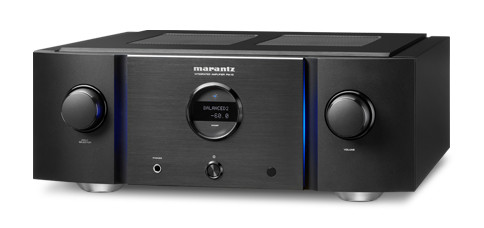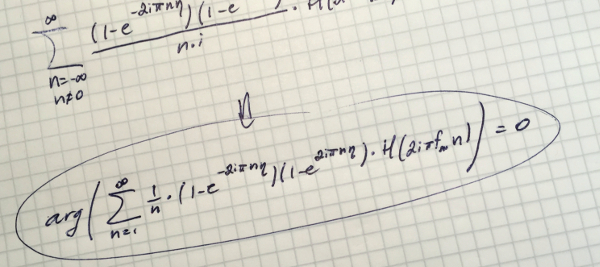Bruno Putzeys: Head of the Class (D, That is)

S&V: Your diyAudio profile lists your interests as audio and philosophy. An interesting combination. Why audio?
Bruno Putzeys: It’s congenital I’m afraid. My maternal grandfather and great-grandfather ran a shop manufacturing radios in the 1930s. My grandfather reportedly claimed in the 1950s that the day would come when a powerful amplifier would fit in a matchbox. He died early and I never met him but I was infected by this prophecy well before I seriously considered making a career in electronics.
My dad started building amps and speakers at age 12 but never thought you could make a living doing so. As a teen I was, like any geek of my generation, heavily into computers but after a particularly complex software project I decided that I didn’t want to spend my life tied to a keyboard and screen. So I wormed my way out of the attic and went to see what my father was up to, which was a shootout between a solid-state amp and a 10-watt valve [tube] affair. The valves won, and the sheer unruliness of that outcome is what got me interested.
S&V: Walk us through your professional audio history. Which accomplishments are you most proud of?
BP: My first job was in the Philips lab in Leuven (Belgium) where I’d done my thesis work on Class D. Far from being allowed to continue along those lines I was told to tweak the umpteenth round of cost optimization for one of those ugly black micro stereos everyone wanted to make in the ’90s and that all used Sanyo Class B hybrids. It was soul-crushing work and I took every opportunity to talk to management about Class D until finally someone gave me the chance to do a Class D design for TV’s.
Apparently the Philips TV department had gotten nowhere with a Class D chip the research lab in Eindhoven had been working on for years. So I got a month to do a discrete circuit that could do what that chip couldn’t. Thirty days later I presented them with a small 25-watt self-oscillating amp that could be made for $5 or so. I’m still wondering if the intention hadn’t been to hand that young whippersnapper a loaded gun to shoot himself with because, looking back, one month was perhaps a bit short for a project of this nature. But it bought me a bit more time to do a 100-watt version and so on—each time a few months more to try out something new.

Grudging admiration from the management slowly turned to enthusiasm and I got a right-hand guy for engineering work and another to try and turn into money whatever it was that the two of us came up with. By 2000 I enjoyed an enviable degree of protection within the lab, both concerning projects I wanted to do and against the consequences of my rather forthright attitude regarding, well, pretty much anything really.
Inventing that ”UcD” circuit was, of course, one of my highlights at Philips, but two others are worth mentioning. You have to remember that around the turn of the millennium there was still confusion about the fourth letter of the alphabet, to wit “D,” and whether that was supposed to mean “digital.” Of course, Class D was only called that because the amplifier class invented before it was called Class C, but confusing semantics and engineering is another way of spelling “hi-fi.”
I was just as confused and as a result concocted a power DAC that directly converted DSD to analog in the power domain. The thought process that made me embark on this folly is a prime example of how not to start an engineering task but the result is still the most efficient (97 percent) and lowest distortion (0.007 percent) zero-feedback power amp ever made. Sonically, it was immediately killed by the first UcD prototype, which got me thinking. I decided that an aesthetic precept like “digital all the way” or “no feedback” can’t hold a candle to the simple question, “What problem are we trying to solve here?”
Thus chastised, I quickly grew exasperated at the continuing cottage industry, both in business and in academia, of spending years looking for the ideal algorithm to turn a pulse-code modulation (PCM) signal into pulse-width modulation (PWM) while the power stage was left as an afterthought. Ostensibly they all believed that that was the trivial part while the reverse was blindingly obvious to anyone who’d actually tried building one. One day I thought it might be amusing to throw a stick into the hen coop as we say here and see if I could come up with a decent digital PWM algo of my own and publish it. In evidence that creativity is at its highest when there’s no pressure, two hours was all it took to find one that was simple to implement and had no distortion at all, for every reasonable definition of “none at all.” It was intended as a stunt but the core idea turned out to have very serious applications wherever PWM was used. It is still generating new insights into the fundamental nature of PWM. That was completely unexpected. I wouldn’t be surprised if in the very long run that little invention gets to be my real contribution to the art.
Still, if I had to choose a personal highlight, it must be my “Krikkit One” moment—that little 25-watt amp that got my Class D career moving.

In 2004 I moved to Hypex, which was mostly a period of consolidation, refinement, and branching out. I left Philips out of ire with their inability to turn great ideas into a commercial success. By and large Hypex did realize that success and gave me the gratification of seeing a good idea recognized by a wide audience. Describing Ncore as a “refinement” might sound irreverent but the crucial insight was to find a concise mathematical expression for the stable operating point (the “limit cycle”) of a self-oscillating amplifier. Ncore merely followed when I started applying this as a tool to optimize a UcD style circuit and increase loop gain whilst keeping the thing stable. The improvement in sound quality was impressive. Sometimes an evolution can be so great that it’s worth being called a revolution.
I also got to branch out into DSP for loudspeakers and to start a new high-end brand called Mola-Mola where I could design electronics for end users and do it exactly the way I thought was right. In particular the DAC I did for this project was quite something. It ties together a lot of loose ends from my past, ranging from sample rate conversion to discrete op amps and the PWM algorithm I mentioned earlier.
S&V: Generally speaking, what are the key benefits of Class D versus the traditional Class AB and Class A designs that have long been favored by audiophiles?
BP: Efficiency and therefore the ability to construct amps that are powerful for their size. Only that. Modern Class D amps, in particular mine—ahem—sound good not because they’re Class D, but in spite of it. I can’t repeat that often enough. Left to its own devices, a switching power stage tries to do just about anything except amplify audio. You choose Class D to save energy but it’s all elbow grease after that. People don’t realize how much more challenging Class D is compared to Class AB. It’s truly an order of magnitude.
S&V: Class D amplifiers have been around for years but are most common in powered subwoofers and non-critical listening applications. What is it about older designs that made them unsuitable, or less suitable, for use in full-range audio applications? Put another way, what prevented Class D from performing at the sonic level of a high-quality Class AB design?
BP: They weren’t good enough. Distortion was high and output impedance was all over the map, especially near the end of the audio band. At the core of the problem is fear of math. Even serious papers about power electronics for things like electric cars tend to resort to well established rules of thumb like “phase margin” and “gain bandwidth” rather than taking things from the ground up—even when the subject matter clearly requires it. So that meant little help was coming from the industrial power electronics community where you’d expect it to be most readily available.
- Log in or register to post comments






























































